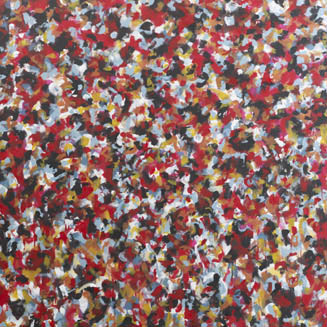Paul Newcombe
“Since every colour can be shaded with any other colour, an unlimited variation of shading, within every colour scale is possible. Although a red can be, in itself, bluish, greenish, brownish, etc., its actual colour-emanation in the pictorial totality will be the conditioned result of its relationship to all the other colours. Any colour shade within one colour scale can become, at any moment, the bridge to any other colour scale. This leads to an interwoven communion of colour scales over the entire picture surface...”
—Hans Hoffmann, 1955
Newcombe continues to draw on techniques that have informed his art practice. In combination with this, Newcombe has been able to assimilate two further points of departure. The beginning of a greater sense of improvisation become evident and is pivotal in driving and naturally directing the work. In such, his work has become more exploratory, or existential. As a viewer we are invited to experience an essence of what is being represented. One corollary of this is that Newcombe’s intuitive approach creates a further sense of abstraction. Colour seeps through, and an understanding of depth is created through the topical or bird’s eye view of the work. It is interesting to note that many of the works are extrapolated from aerial photos of garbage tips.
In conjunction, Newcombe’s current work, also articulates his interest in various philosophies such as Quantum Physics. He visually discusses depth and time through the layers upon layers of paint. There is a vertical sense of time experienced, where the foreground and background are visually articulated on a single plane. Pertaining to this notion, Newcombe often rotates the canvas so there is no singular focal point. There is only movement.
Technically, Newcombe has developed his process of mark making by experimenting with different brushstrokes to translate the feeling of each view captured. Overall Newcombe’s collection of work has a greater focus on the emotive process than in previous collections. In doing so there is there is a greater experience of freedom for the viewer, who is given a snapshot of the compositional field to fall into.



